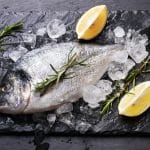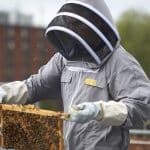Wild camping in the UK provides a surreal opportunity to be one with nature. But, when you’re out in the wilderness, it’s essential to know which plants can be your friend and which can be your foe. Foraging for free food can be therapeutic and fun, but the last thing you want is to fall ill from ingesting a poisonous plant. This article will guide you on identifying common plants, how to control your interaction with them, and what to do if you accidentally consume a harmful one.
Recognizing Common Wild Plants
Before you set foot in the wilderness, you need to familiarize yourself with the common plants found in the UK. Some plants might seem harmless and even edible, but on closer inspection, they can turn out to be the exact opposite. Armed with the right knowledge, you’ll be able to confidently avoid any nasty surprises.
A lire aussi : What non-electric warming technologies can be used during cold UK camping nights?
Deadly Nightshade (Atropa Belladonna)
Also known as Belladonna, this plant is quite common in the UK. Although it bears beautiful bell-shaped, purple flowers and shiny blackberries, don’t be deceived. Every part of this plant, especially the berries, is highly toxic. Consuming it can result in dilated pupils, sensitivity to light, blurred vision, headaches, confusion, and even death in severe cases.
Monkshood (Aconitum Napellus)
Commonly found in mountainous areas, Monkshood is a highly toxic plant. It derives its name from its hood-shaped flowers, which can be purple or bluish. Though beautiful, the plant has a sinister side. Its poison, aconitine, can lead to nausea, vomiting, and in extreme cases, even death.
Lire également : What mobile apps provide the best offline maps for camping in remote UK locations?
Foxglove (Digitalis Purpurea)
This plant is easily identifiable by its tall spikes and bell-shaped purple flowers. While it’s used in treating heart conditions when professionally processed, it’s deadly when consumed in its raw form. It could lead to an irregular heartbeat, dizziness, and even death.
Edible Plants during Wild Camping
Foraging for edible plants during a wild camping trip can lend an exciting dimension to your adventure. There are several plants that not only serve as fantastic food sources but also help in hydration. The trick is to identify these species correctly and enjoy what nature has to offer.
Nettle (Urtica Dioica)
Don’t let the stinging hairs of this plant deter you. Once cooked, Nettles lose their sting and offer a plethora of health benefits. High in vitamins and minerals, they can be consumed as a tea, soup, or salad.
Dandelion (Taraxacum Officinale)
This common weed is entirely edible. Its young leaves can be used in salads, flowers to make wine, and roots as a substitute for coffee.
Water Mint (Mentha Aquatica)
Found near water bodies, Water Mint is a welcome find during a camping trip. With its unmistakable minty aroma, it’s perfect for brewing tea or adding flavour to your campfire meals.
The Role of Plants in Water Purification
Clean water is a basic necessity during camping. If you’re in an area where clean water is scarce, certain plants can serve as natural filters. The xylem tissue present in plants helps in removing bacteria and other impurities from water.
Banana Plant (Musa)
The peel of a banana plant can serve as an effective filter. After peeling the banana, cut the skin into chunks and add it to your container of water. Allow it to sit for a few hours. The banana peel will absorb toxins, making the water safer to drink.
Cilantro (Coriandrum Sativum)
Commonly known as coriander, Cilantro is an excellent choice for water purification. The plant is highly effective at absorbing lead and nickel from water.
The Importance of Poison Control
Despite taking precautions, if you happen to ingest a poisonous plant, knowing what to do next is crucial. The impact of the poison will depend on the type and quantity of the plant ingested. If you suspect poisoning, contact a poison control centre immediately and follow their instructions.
Remember, prevention is always better than cure. The best way to avoid plant poisoning while camping is by educating yourself about different species, both edible and poisonous. After all, the beauty of wild camping lies in enjoying nature’s bounties while staying safe.
Foraging for Wild Edibles and their Preparation
When wild camping, one of the most rewarding experiences is foraging for your own food. This not only provides you with fresh and organic sustenance but also adds a sense of adventure and satisfaction to your trip. However, foraging can be risky if you can’t accurately identify edible from poisonous plants. Therefore, learning to identify wild foods correctly is crucial.
Wild Garlic (Allium Ursinum)
Wild Garlic, also known as Ramsons, is a common plant across the UK, especially in deciduous woods. It has a pungent garlic smell, and its leaves and flowers are completely edible. The leaves can be used in salads, pesto or as a garnish, while the flowers make an attractive addition to salads.
Hazelnuts (Corylus Avellana)
Hazelnuts are a rich source of protein and can be found in abundance in the UK. They are encased in a green frilly shell and are ripe for picking in late summer and autumn. They can be consumed raw, roasted, or used as an ingredient in various dishes.
Bilberries (Vaccinium Myrtillus)
Bilberries are small, dark berries that grow in wild bushes across the UK. They are delicious and packed with antioxidants. They can be eaten raw or used to make pies, jams, and sauces.
Paul Kirtley, a renowned wilderness bushcraft expert, emphasizes the importance of double-checking all wild foods for their correct identification before consuming them. Carrying a good field guide or using a reliable plant identification app can be incredibly helpful.
Ensuring Safety in the Wilderness
The joy of wild camping is immersing yourself in nature, far from the hustle and bustle of city life. However, this does not mean leaving your safety to chance. From the right camping gear, like a durable tent and a comfortable sleeping bag, to basic knowledge about potentially hazardous plants, ensuring your safety should be a top priority.
Poison Ivy (Toxicodendron Radicans)
While Poison Ivy is more common in North America, it can also be found in some parts of the UK. Contact with this plant can result in a severe allergic reaction, resulting in an itchy and often painful rash. It’s identifiable by its clusters of three leaves.
Giant Hogweed (Heracleum Mantegazzianum)
Giant Hogweed is a highly toxic plant found along riverbanks, footpaths, and waste grounds. It’s part of the carrot family but is a plant to be wary of. Contact with its sap can cause severe burns and blisters. It can grow up to five metres tall, with white umbrella-shaped flower heads.
To ensure safety, always stick to paths and open spaces while hiking or foraging. Be cautious when venturing into overgrown or woodland areas.
Conclusion
Wild camping in the UK offers an exciting opportunity to escape urban life and connect with nature. Whether you’re foraging for wild garlic, cooking up some hazelnuts by the campfire, or simply admiring the beauty of the plants around you, knowing how to identify and avoid toxic plants is vital. With this guide, you’re now equipped with knowledge about some common plants, edible and poisonous, that you might encounter on your next wild camping trip.
However, remember that this guide only scratches the surface. There are thousands of plant species in the UK, and a single article cannot cover all of them. Therefore, consider investing in a detailed field guide or plant identification app and expand your knowledge before setting out on your adventure.
As you head out into the wilderness, remember that being prepared and informed is your best defence. Take precautions, respect the environment, and enjoy the wild beauty of the UK’s national parks.
Image Credit: All plant images are taken from the National Park archives and Paul Kirtley’s blog on wild edibles. Always use a trusted source for plant identification to avoid any dangerous mistakes.










